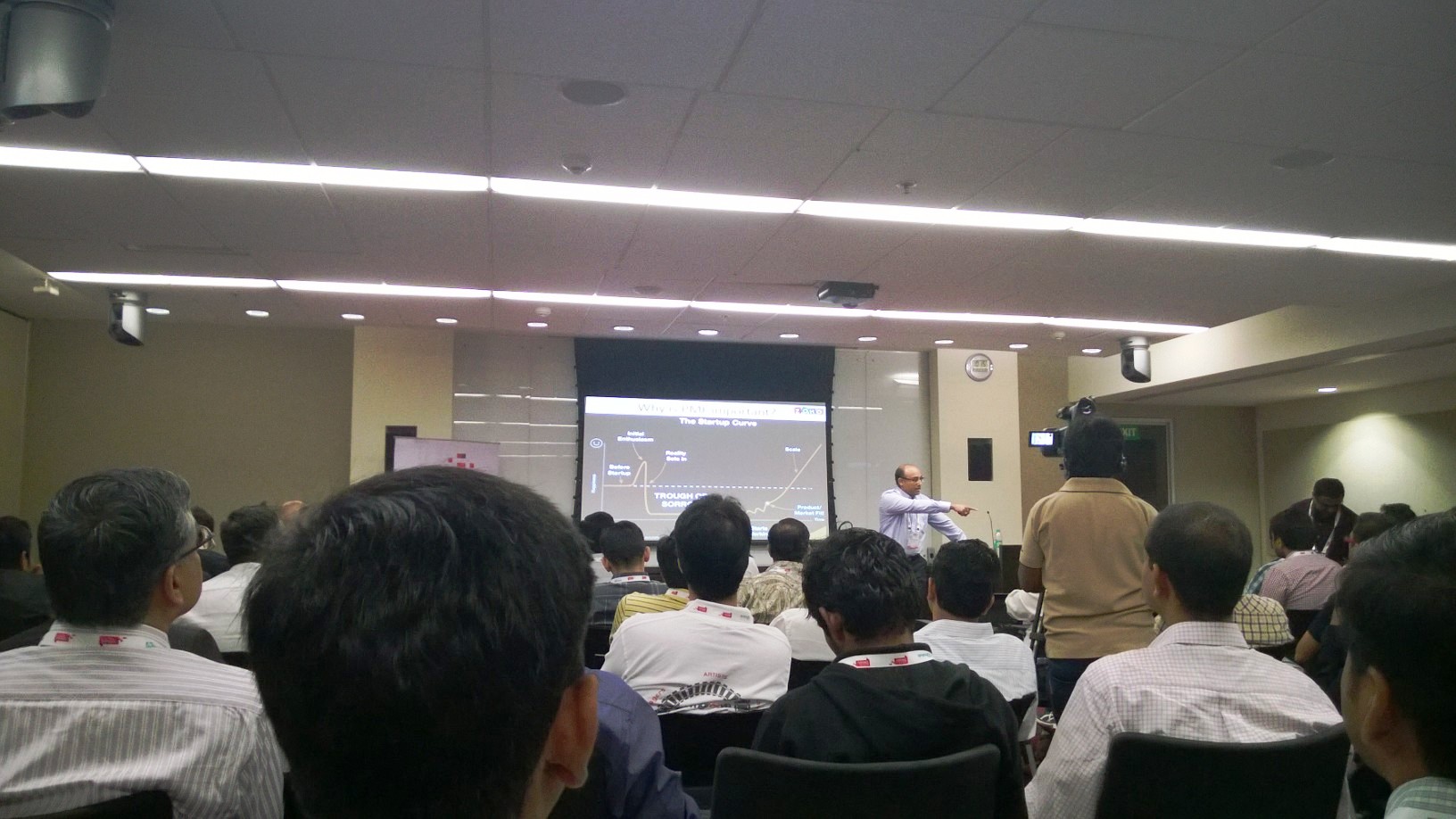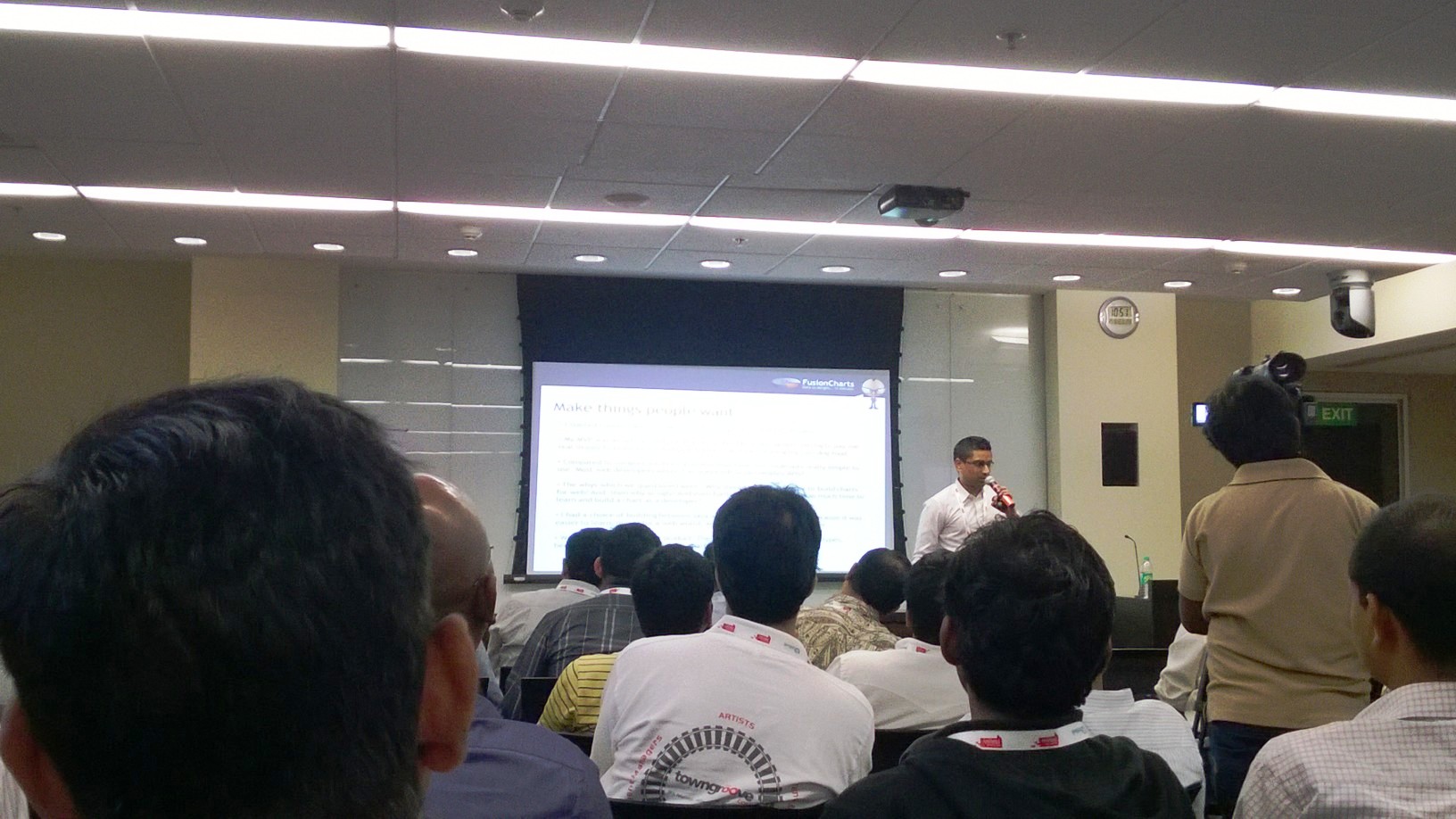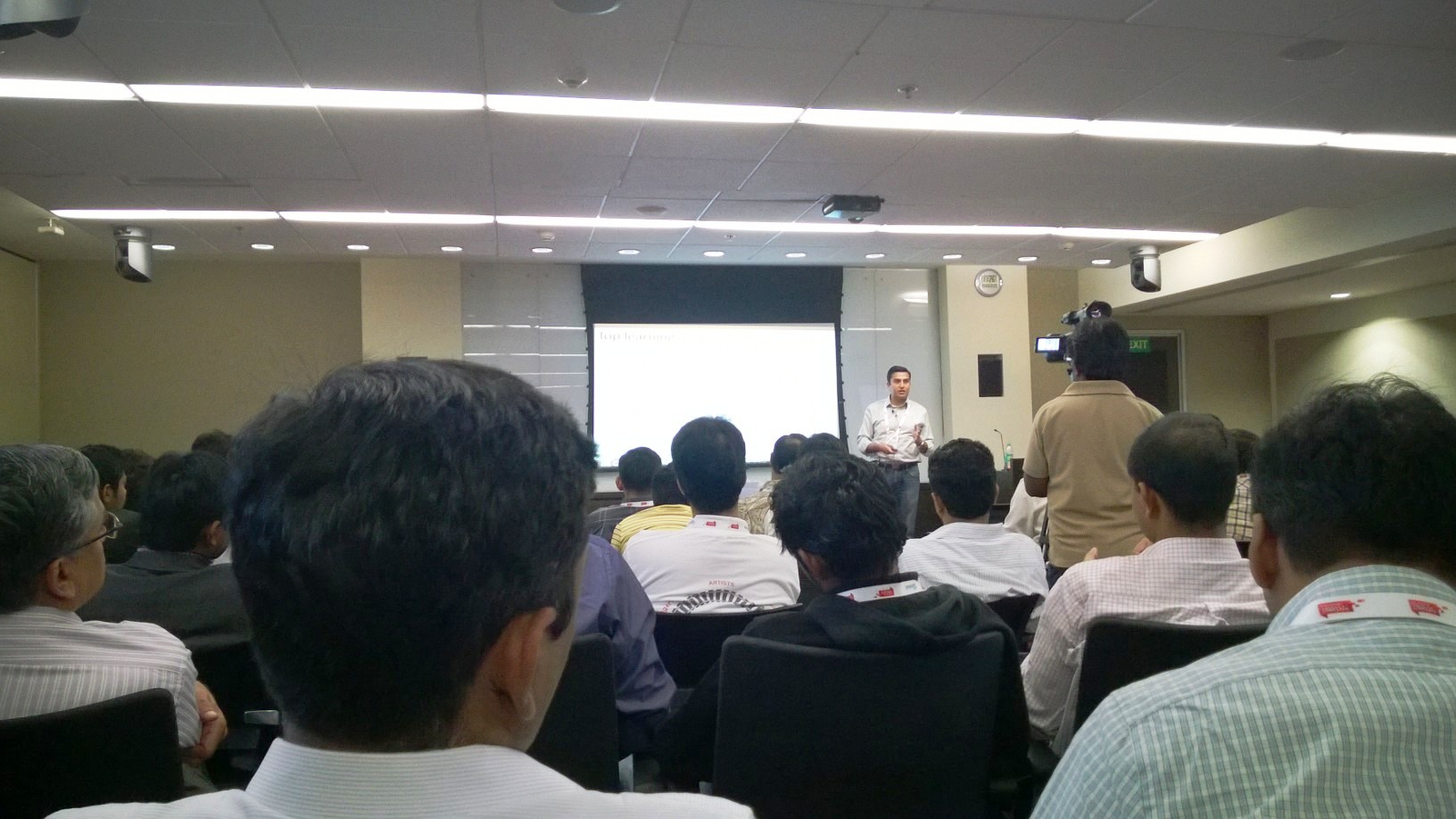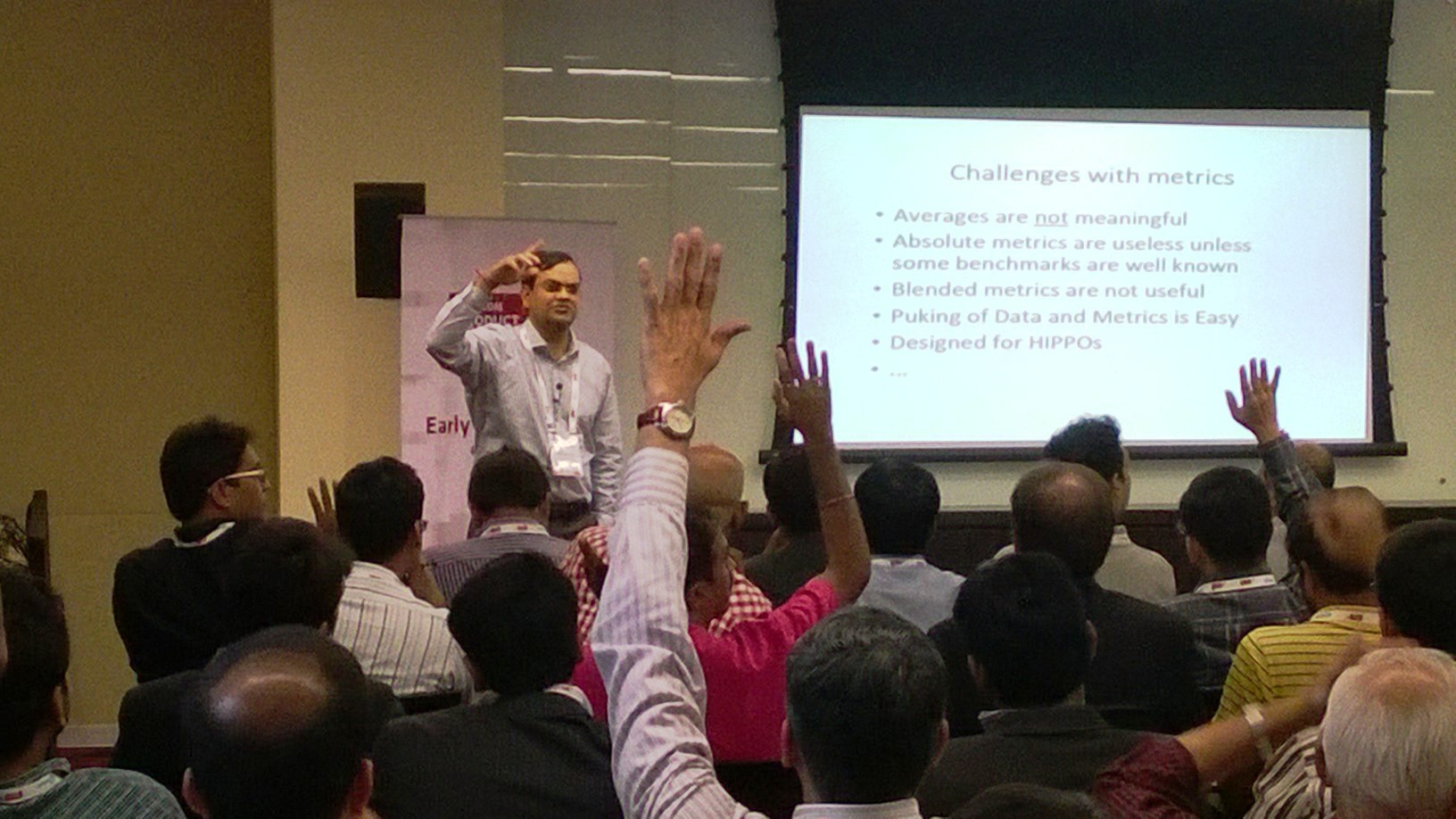Hey Rodinhooders, how are you doing? If you are an early stage entrepreneur, this article is for you.
So, I attended the NASSCOM Product Conclave in Bangalore representing us Rodinhooders along with Asha. Our work started a few days before the event. Asha and I chatted constantly trying to figure out the various parallel sessions, locations and everything else. So, finally it was decided that while Asha would follow the Growth Summit at Vaswani Centropolis, I would attend the Early-Stage Summit at Microsoft Office. Since a number of Rodinhooders are early-stage start-up founders and team members, I thought it would be nice to bring all this information to you.
In fact, I wanted to do a live Blog & Tweet session but sadly no Wifi and poor Connectivity disallowed me to do so. But, here is what I learnt at the NPC 2014.
It is for you to help you figure out details about your product, your funding, your selling strategies and everything in between.
And, none of what I have written below is what I am saying. These are things that experts had put together at the NPC 2014.
So, the first lesson would be on building the right product for the right market. I attended a session by Sridhar Iyenger (VP – Product Management, Zoho), Pallav Nadhani (Founder, Fusion Charts) and Sayan Chatterjee (VP – Product Management, Flipkart) on ‘Get from MVP (Minimum Viable Product) to Product Market Fit’. In simple terms, how do you go from building a basic prototype (beta) to building a quality final product is what was discussed in this session.
The session started with Sridhar talking about getting from the MVP to Product Market Fit.
So, when exactly do you have a Product Market Fit:
i) You are in the early stage of building a product
ii) You are solving a pain (and, market is willing to pay for it)
iii) There is stickiness to your product by customers
iv) Your product has the potential to scale up quickly
So, if you are at a stage where you have built a working product with certain basic features and now need to get some validation from prospective customers, you are at your MVP. At this stage, there is a possibility that you may or may not be certain about your revenue model or the one you are certain about might not be the one that is the best for your business. What I am pointing to here is that at the MVP stage it is okay to be clueless about many things and this definitely is the best time to get as many answers about your product as you can.
So, what should you try to do at MVP to get a Product Market Fit?
A) Learn fast, fail fast – do as much of experiments as you can
B) Collect feedback from users and get as many metrics in place as possible. When it comes to metrics, always focus on those aspects that matter for you.
C) Pivot and iterate – till you are able to achieve good results and expected outcomes. This needs to happen rapidly over a very short period of time
This brings me to the next speakers Pallav Nadhani and Sayan Chaterjee. Both the speakers gave example of their respective companies in helping us understand how they got to a stage where the product was market ready and accepted and the mistakes they made in getting it there.
Pallav, as you might know, started Fusion Charts as a teenager to earn additional pocket money so that he could spend more time and money bowling or at CCD (in those days, it was the only cool coffee joint in India). For Pallav, his MVP for Fusion Charts was a mere article of 1500 words with some interactive charts.
When he was thinking of his Product Market Fit, he had some basic expectations from his product. He wanted the installation to be a simple copy paste one so that even a novice can do it easily. His idea has always been that build things that are very simple to use for the end user. Infact, Fusion Charts initially ran a program where if an user is unable to create their first chart in less than 15 minutes, their entire fees would be refunded. This, he said, was self-penalization and helps build customer centric products.
Some additional points that he made about Fusion Charts as the company built the market ready product were:
i) Initial pricing was very low (US$ 35) and they kept increasing it as they kept discovering additional costs till they reached a stable price point
ii) Fusion Charts always gave out older versions as open source, for free
iii) Created a mascot and comics to help users resonate with the brand
iv) Channel Partners – especially in countries like China and Brazil where the primary language is unknown to us – it is very important to have local partners (helps to have modes of up-sell and cross-sell in such cases)
The next talk by Sayan of Flipkart was aimed at letting the audience that a big company with many resources at its disposal can also get the Product Market Fit wrong. He took the case of the Large Appliances (televisions, refrigerators, etc) Business which was started by Flipkart in 2011 but had to be closed in 2013 due to adding up costs and losses. In 2012, Large Appliances was an INR 46,500 Cr business and Flipkart definitely wanted a piece of the action. But, Flipkart realized by 2013 that this was not working out for them. Selling was minimal, The Return Rate (of Goods bought) was very, very high when compared to the offline, in-store purchase market.
Sayan said there were a number of mistakes that included the fact that there was no easy-return policy, sales and distribution were misaligned with good being bought in Bangalore sometimes being brought over from Delhi warehouse by shipping, EMI & Offline payments was missing, no buying help was provided such as easy installation, etc.
Flipkart did a study and corrected all these mistakes and relaunched their Large Appliances business in mid-2014. They started with selling only televisions in only Bangalore with providing much better purchase experience for customers, easy installation, no long distance shipping, providing added customer support post installation and fixed clear goals and targets for the business unit.
This has resulted in a lot of positive results for Flipkart including the fact that they have spread the business to 55 cities, are on track to be the largest in this domain and they have reduced return rates to a very, very low number.
Some of the learnings that Sayan shared were:
i) Study your market, players and gaps very carefully – or else it is bound to lead to disaster
ii) Understand the ‘real’ need, not what you believe is the need – speak to prospective users and customers
iii) Satisfy needs as best as possible – customers like to be made feel special
iv) Metrics are very important – keep observing relevant metrics at all times
There was also a lot of very interesting points discussed during the session on ‘Metrics that Matter’ by Amit Somani (Former Group CPO, MakeMyTrip.com).
On the topic of Metrics, Amit noted that:
i) Averages are NOT meaningful (usually)
ii) Absolute metrics are useless unless some benchmarks are well-known
iii) Puking of Data & Metrics is easy but NOT relevant
iv) Metrics are designed for HiPPOs (Highest Paid Person’s Opinion) which may not be very relevant for early stage start-ups
He said that GOOD Metric must be Self-Explanatory, Relative, Goal Driven, Granular, and ACTIONABLE!
So, with this I leave you with what I learnt about getting to the Product Market Fit stage from the MVP. I have tried to apply some of the concepts to our new GyanLab.com online platform for parents and it is working wonderfully well and we are on track to release the beta with a Product Market Fit acceptance mindset and hope to take off from there.
What about you?
Connect with me on Twitter: @PriyadeepSinha
*******








